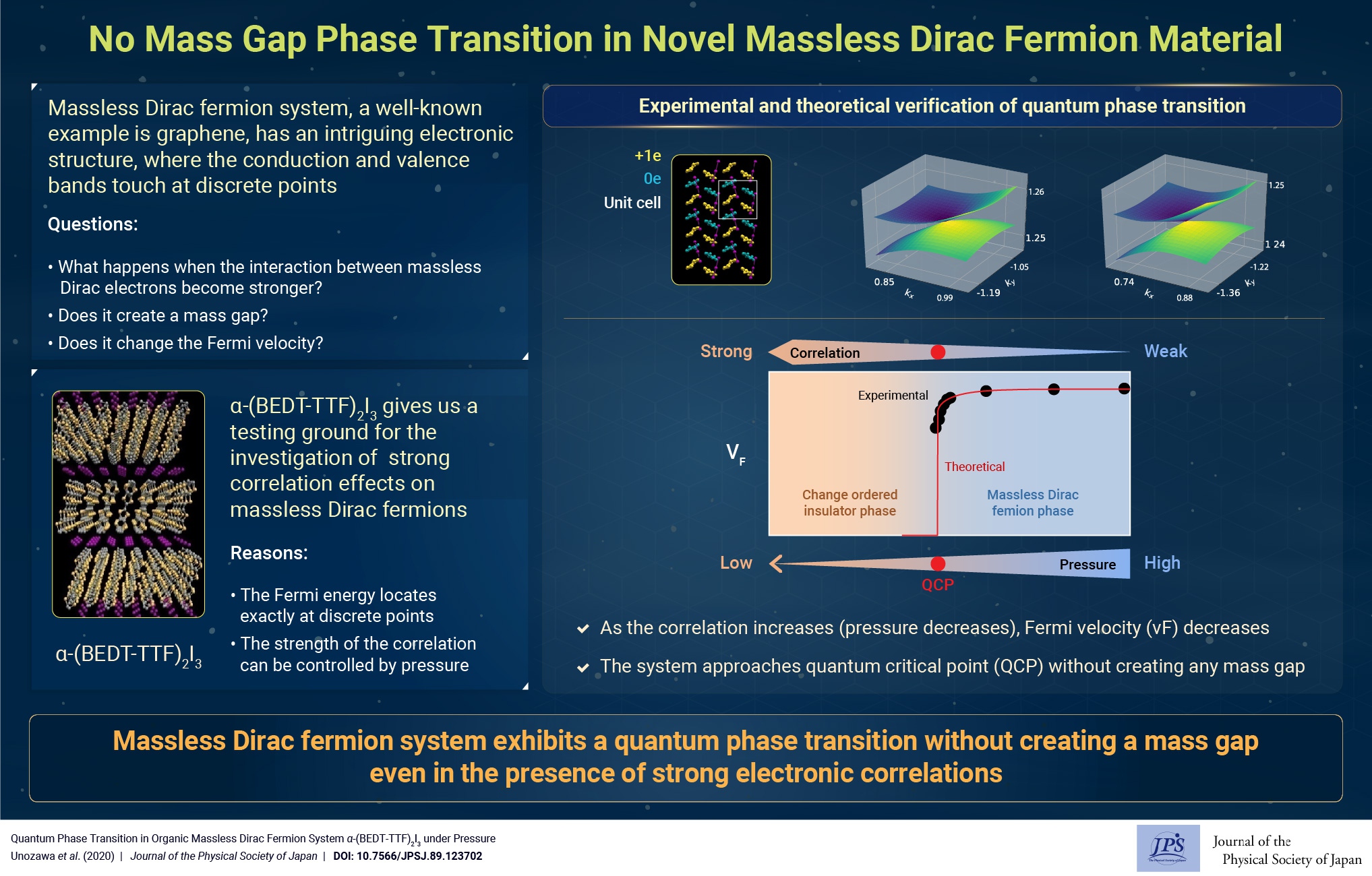No Mass Gap Phase Transition in Novel Massless Dirac Fermion Material
© The Physical Society of Japan
This article is on
Quantum Phase Transition in Organic Massless Dirac Fermion System α-(BEDT-TTF)2I3 under Pressure
(JPSJ Editors' Choice)
J. Phys. Soc. Jpn. 89, 123702 (2020).
Using an organic massless Dirac fermion system, we found that massless Dirac fermions undergo a quantum phase transition without creating any mass gap even in the strong coupling regime.
Quantum Phase Transition in Organic Massless Dirac Fermion System α-(BEDT-TTF)2I3 under Pressure
(JPSJ Editors' Choice)
J. Phys. Soc. Jpn. 89, 123702 (2020).
Share this topic
Fields
Related Articles
-
Antiferromagnetism Induces Dissipationless Transverse Conductivity
Electronic transport in condensed matter
Magnetic properties in condensed matter
Electronic structure and electrical properties of surfaces and nanostructures
2024-7-24
An investigation using high-quality NbMnP crystals demonstrates that the anomalous Hall conductivity arising from antiferromagnetism is dissipationless, as expected from the intrinsic mechanism.
-
d2 Trimer and d3 Tetramer in a Pyrochlore Lattice
Dielectric, optical, and other properties in condensed matter
Electron states in condensed matter
2024-7-11
Based on the charge disproportionation of V3+ and V2+, the V3+(d2) trimers and V2+(d3) tetramers in the vanadium pyrochlore lattice of AlV2O4 are described by the orbitally-induced Peierls mechanism.
-
Evaluation of the Exchange Stiffness Constants of Itinerant Magnets from the First-Principles Calculations
Electron states in condensed matter
Structure and mechanical and thermal properties in condensed matter
2024-6-5
Using first-principles calculations, we evaluated the exchange stiffness constants of ferromagnetic metals at finite temperatures. The constants can be used as parameters in the Landau–Lifshitz–Gilbert equation.
-
Exploring Electronic States in BEDT-TTF Organic Superconductors
Superconductivity
Electronic transport in condensed matter
Magnetic properties in condensed matter
2024-4-24
This review, published in the Journal of the Physical Society of Japan, provides a comprehensive summary of the electronic states observed in BEDT-TTF type organic superconductors, including metal-insulator transitions, Mottness transitions, non-Fermi liquids, quantum spin liquids, and Bose-Einstein condensation.
-
Conversion of Chiral Phonons into Magnons in Magnets
Electronic transport in condensed matter
2024-4-1
A new phenomenon involving the conversion of chiral phonons into magnons is theoretically predicted. The effective magnetic field induced by chiral phonons causes a change in the spin magnetization of magnets.

